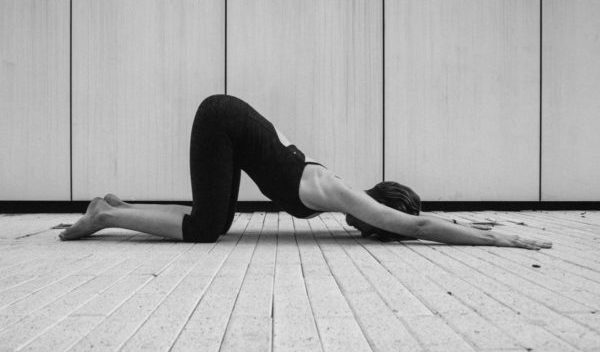Anatomy, Articles, Chinese Medicine, In the Press, Resources, Share Your Story, Yin, Restorative and Meditation, Yoga Medicine® News
5 Reasons to Amp up Your Yin Practice During the Fall
Shannon Stephens, Yoga Medicine Teacher shares 5 reasons why you should be practicing yin yoga for fall. Learn how Traditional Chinese Medicine and balancing Yin/Yang can help with your yoga practice.

Why Practice Yin Yoga this Fall
It’s officially fall and with this new season comes an opportunity to welcome its offerings. In teaching Yin classes season after season, I’ve observed that attendance fluctuates depending on the time of year. Numbers decline during the spring and summer, more yang seasons, and then steadily climb as we head into the Yin seasons (fall and winter). The correlation between cooler temperatures and larger Yin classes is no coincidence.
Traditional Chinese Medicine (TCM) is based on the idea that humans are inseparable from nature. We are a reflection of the natural world, ever changing with the ecosystem. To remain balanced, we first simply need to open our eyes and observe the world around us. In TCM, each season has a unique set of characteristics. Fall is associated with the metal element. Like metal, this time of year offers the chance to become more structured. Long, relaxed days of summer are followed by the need for routines and schedules. As the world becomes quieter, cooler, and darker, so do we. This is a good time to look inward; the perfect time to honor the need to be still and notice any internal shifts.’
Finding Balance
Among its many lessons, yoga teaches us how to know and respond to our bodies. Each time we step onto our mats, we are invited to fine tune our proprioceptive skills and observe our internal workings. Through the physical practice of yoga, we cultivate mindfulness and intuition. This keen awareness is like a light that guides us both on and off the mat. Yoga teachers commonly say, “listen to your body”. When something doesn’t feel right, we learn to modify and adjust the practice to fit the current situation and our unique constitution. Choosing an appropriate type of practice, whether it’s alignment based, flow based, Yin, restorative, or meditative, is as important as dressing for the weather. This isn’t to say that you need to abandon a more dynamic or vigorous practice, but it is important to make time for stillness when you hear the call to draw inward. Yin yoga is characterized by passive, time-held postures. It’s a practice that beckons us to become more introspective, quiet, and still. The following are among the many reasons we all need Yin yoga, especially during the fall.
1. The Yin practice helps with the transition.
Change can leave you feeling as though the rug has been pulled out from under your feet. The shift from summer to fall is a tricky one and you’re not alone if you are struggling with the change. Many of you may be moving from a more relaxed schedule to a stricter routine. Others may find it difficult to come down from the summer high and soften around the edges. A quiet, introspective practice may bring flightiness to the surface. Remaining still even when you feel the urge to fidget is a powerful practice that can soothe the central nervous system and leave you calm and grounded.
2. Grief is the emotion that correlates with fall and it makes perfect sense.
Trees lose their leaves, grass goes dormant, and the landscape becomes barren. Without death life cannot exist; without rest we cannot recharge. Yin offers the chance to rest in stillness and activate the parasympathetic nervous system. The PNS helps the body rest, digest, and recover, and makes us more resilient to stress. More time in this mode equals harmony in the body.
3. Fall is a time to reflect on where we’ve been and to prepare for what lies ahead.
We’ve come out of a very abundant and productive time of year and now it’s harvest season – an opportunity to gather and store for the coming months. By aligning your own energies to the natural cycles of the earth you can surrender to struggle. Rest and contemplation go hand-in-hand with this more dormant time of year.
4. The Lung and Large Intestine meridians are the Yin and Yang organ pair associated with fall.
Taking in and letting go are characteristics of these organs. When we take a full, diaphragmatic breath we charge the body with life or prana. The exhale is symbolic of letting go; cleansing the body and releasing what we no longer need. Inviting slow, deliberate diaphragmatic breaths to your Yin practice is another doorway to the Parasympathetic Nervous System. A calm gut makes for a calm center. Slowing down with a Yin practice can help relieve tension in the belly, aiding the digestion and elimination process.
5. Balancing Yin and Yang energy is essential to our well-being.
Without Yin-type experiences, we run the risk of driving ourselves into the ground. Continue to practice other forms of yoga, but be sensitive to the call for downtime. The Yin practice is one that honors our inherent need to slow down and be still. It’s a practice that can help us create harmony with Earth’s cycles and with our own.












